Fujifilm X-S10 vs Fujifilm X-S20: Differences and Similarities
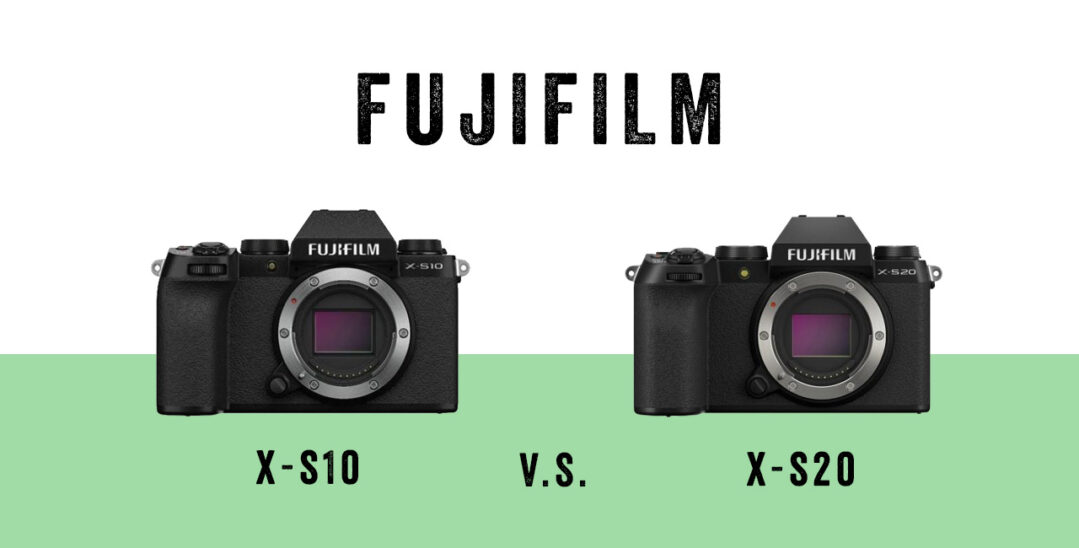
While the Fujifilm X-S10 and Fujifilm X-S20 look similar in appearance, there are some significant differences under the hood. In this article, we’ll show you all the similarities and differences, and help you choose the best camera for you.
With the Fujifilm X-S10 and Fujifilm X-S20, the Japanese brand has their own hybrid models, which are aimed at enthusiasts. With these cameras, it is possible to produce both good photos and videos. The cameras are compact and light, which makes them popular among travelers. As far as we’re concerned, they fit in the best compact travel cameras.
Fujifilm X-S10 vs X-S20: Year of introduction
The X-S10 is the older of the two and was released in November 2020. The X-S20 is a lot newer and was launched in June 2023. In those barely three years, little has changed in terms of appearance. But why would Fujifilm? It is that classic retro look that has attracted many camera buyers lately. Inside we find three years of technological improvements. In those three years, AI technologies have taken off.
Fujifilm X-S10 vs X-S20: Price
The X-S10 is the older camera and therefore logically cheaper. The X-S20 can be seen as the X-S10 II and has the upgrades to match.
The X-S20 is indeed a lot pricier than the X-S10, but there is also a considerable time in between. In 2020, prices were still somewhat lower, but after the more expensive raw materials, prices have also risen. In addition, the X-S20 has had quite a few upgrades. Think of the 6.2K film option.
Fujifilm X-S10 vs X-S20: General specs
When we look at the general properties, we immediately see more significant differences. For example, the X-S20 has improved in terms of video, stabilization, and speed.
| Fujifilm X-S10 | Fujifilm X-S20 | |
|---|---|---|
 |
 |
|
| Introduction | 2020 | 2023 |
| Sensor size | APS-C | APS-C |
| Megapixels | 26.1MP | 26.1MP |
| Max. Videoresolutie | UHD 4K 30fps | 6.2K 30fps | 6K 60fps |
| Processor | X-Processor 4 | 14-bit RAW & 8-bit photos | X-Processor 5 | 14-bit RAW, 10-bit heif & 8-bit photos |
| LCD-screen | 3-inch vari-angle touchscreen | 3-inch vari-angle touchscreen |
| EVF | 0.39-inch (2.36m-dot) | 0.39-inch (2.36m-dot) |
| ISO | 160-12800 (80-51.200 expendable) | 160-12800 (80-51.200 expandable) |
| Bit photography | 14 Bit RAW | 8-bit | 14 Bit RAW | 8-bit | 10-bit heif |
| Stabilization | Tot 6-stops | Tot 7-stops |
| Autofocus & Tracking | Human face and eye | Eye, face, animal and vehicle |
| Vlog mode | No | Yes |
| Weight | 456 grams (126 x 65,4 x 81.1 mm) | 410 grams (127,7 x 65,4 x 85,1 mm) |
| Price | Check price | Check price |
In the sections below, we take a closer look at all the differences and similarities.
Fujifilm X-S10 vs X-S20: Photography
- Fujifilm X-S10: X-Trans IV BSI CMOS sensor with 26.1 megapixels
- Fujifilm X-S20: X-Trans IV BSI CMOS sensor with 26.1 megapixels
The two cameras use the same X-Trans IV Back Side Illuminated sensor with the same 26.1 megapixel count, but the processor of the X-S20 has been updated and can now also take 10-bit HEIF photos.
Taking Heif photos saves card space while delivering better image quality. Both cameras can produce 14-bit RAF RAW files and 8-bit JPEGS. The 14-bit RAW files are perfect if you want to edit a lot of the photo and want to get a larger dynamic range.
- Fujifilm X-S10: 8-bit JPEG, 14-bit RAF RAW
- Fujifilm X-S20: 8-bit JPEG, 10-bit HEIF, 14-bit RAF RAW
26 megapixels
Although a 26 megapixel doesn’t seem like much compared to the 60 megapixels of a Sony camera or 200 megapixels of a smartphone, you can do more with it than you think. The 200 megapixels of a smartphone are mainly marketing. This is because these 200 megapixels are stuck on a small sensor, meaning each pixel receives very little information. The 26MP-sensor is perfect for taking photos and larger prints and for sharing on the web. You can even zoom in quite a bit to make a different crop.
Better Buffer
The X-S20 wins in the buffer area. The buffer is larger than that of the X-S10, and that has to do with the fact that the X-Processor 5 has succeeded the X-Processor 4. This makes for a faster camera in general, but also faster processing of photos and videos.
Fujifilm X-S10: X-Processor 4 image processor
Fujifilm X-S20: X-Processor 5 image processor
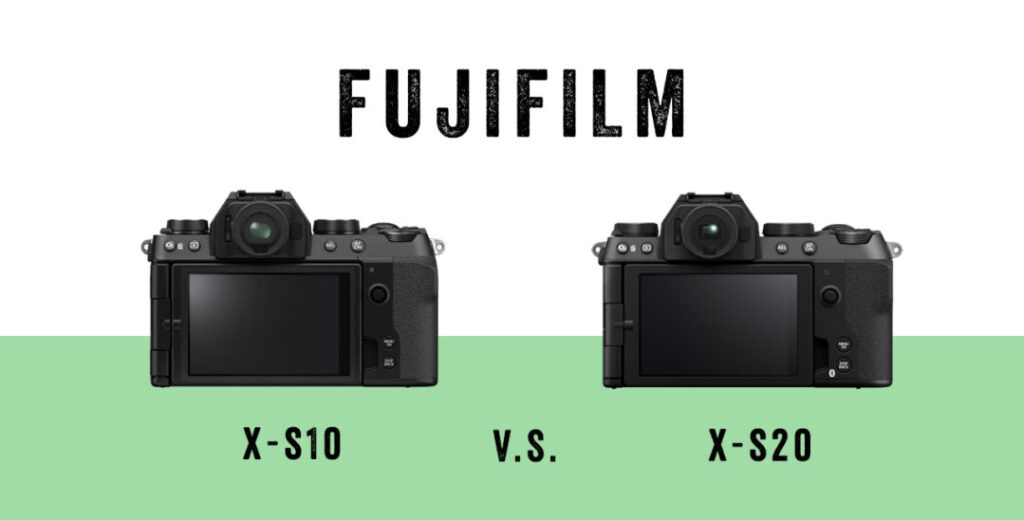
Fujifilm X-S10 vs X-S20: Autofocus
The older X-S10 already has good autofocus for its time and can recognize and track human faces and eyes. The X-S20 can, of course also do this, but can now also recognize and track animals and vehicles. This improvement has to do with the new X Processor 5. This means that the X-S20 also recognizes heads, eyes, and faces of animals, insects, and animals. In addition, cars, motorcycles, bicycles, planes, trains, and drones are now also on the list of recognition.
Subject tracking has also been improved, allowing the X-S20 to track the subject even more precisely, without losing the subject.
- Fujifilm X-S10: Human face and eye tracking AF
- Fujifilm X-S20: Human face and eye, animal, insect, vehicle, and drone tracking AF
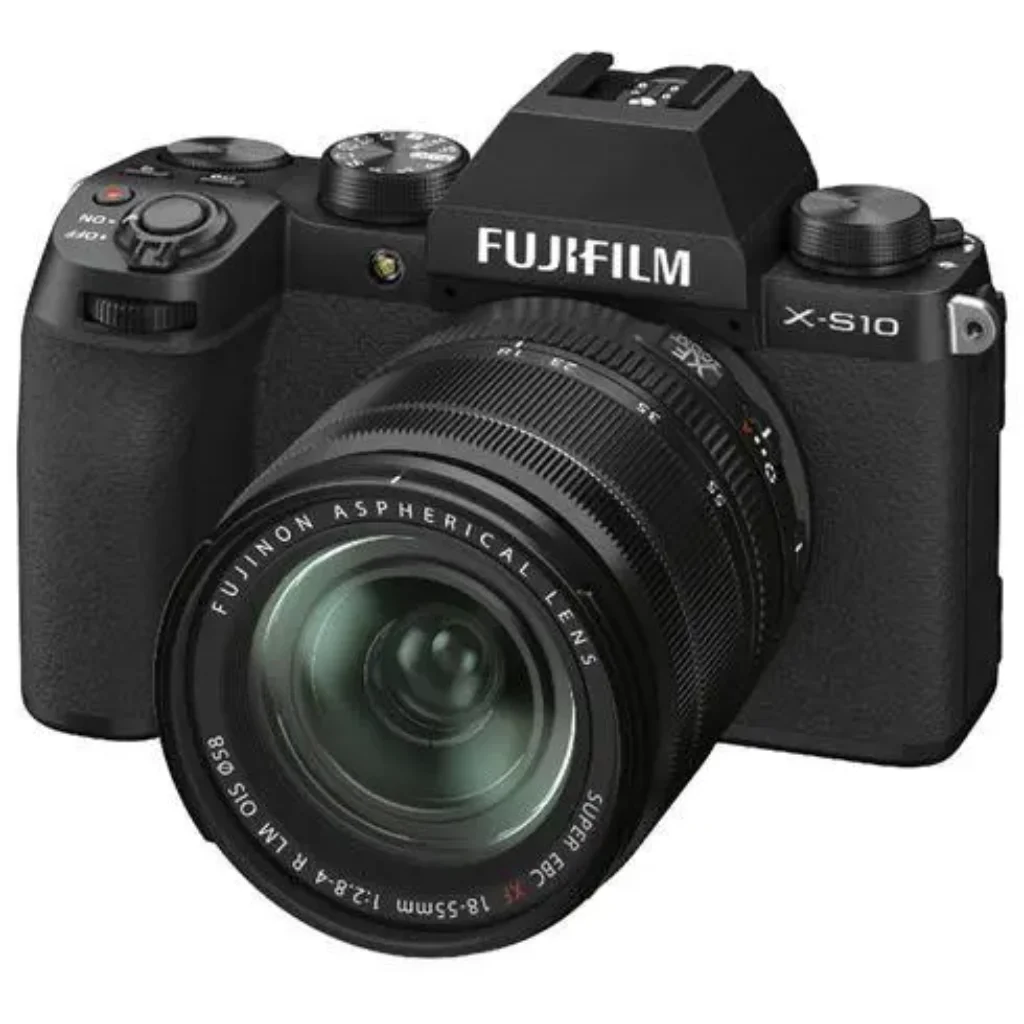
Fujifilm X-S10 with 15-45mm lens
Fujifilm X-S10 vs X-S20: Image stabilization
With 6 stops of internal optical image stabilization, the Fujifilm X-S10 already did very well in 2020. Now a 7th stop has been added to the X-S20. This provides just a little more stabilization when there is not too much light. The stabilization works well when you shoot handheld with slower shutter speeds or want to film. Filmmakers in particular care because a shoulder tripod is not necessarily necessary.
- Fujifilm X-S10: 6-stop image stabilization
- Fujifilm X-S20: 7-stop image stabilization
Fujifilm X-S10 vs X-S20: Video capabilities
- Fujifilm X-S10: 4k30p, 8-bit 4:2:2 internal
- Fujifilm X-S20: 6.2k30p, 10-bit 4:2:2 internal | 6K 60fps internal
The filmmaker now has much more to choose from with the Fujifilm X-S20 than was possible with the Fujifilm X-S10. Where the X-S10 can handle a maximum resolution of 4K with 30fps 8-bit 4:2:2 internally, the X-S20 goes up to 6.2K 30fps 10-bit 4:2:2 internally.
6K film capabilities on the X-S20
Maybe even more interesting is the possibility to film in 6K at 60fps on the X-S20. This gives you the option to slow down up to twice, without losing quality because you have to work at a lower resolution.
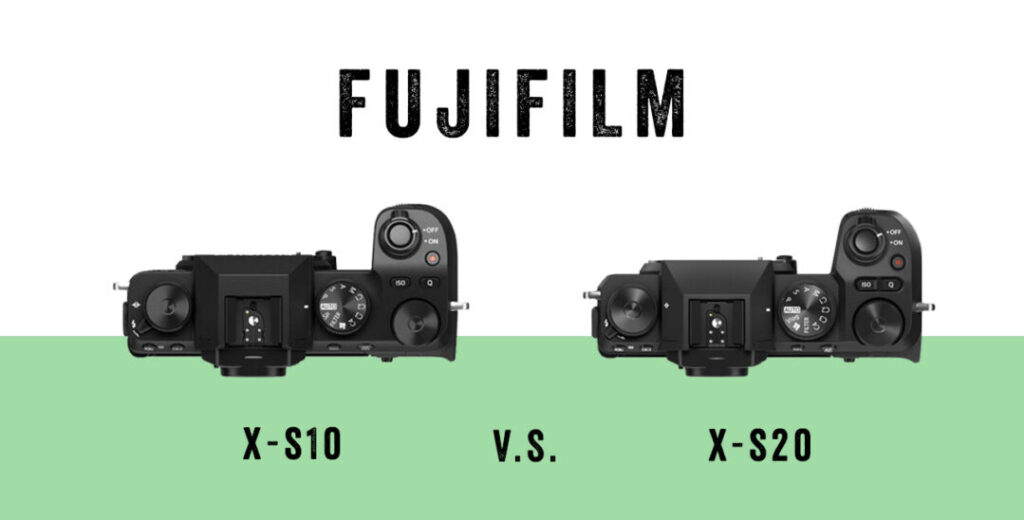
F-Log color profile
Both cameras can use the flat F-log color profile, but on the X-S20 it has been increased by one stop of dynamic range to 13. This flat color profile is useful when you want to get as much detail as possible in the highlights and shadows. In post-production, you have to manually put the colors back into the image.
- Fujifilm X-S10: 12 stops of dynamic range
- Fujifilm X-S20: 13+ stops of dynamic range
You get slow-motion images with both cameras in Full HD 1080p up to 240fps.
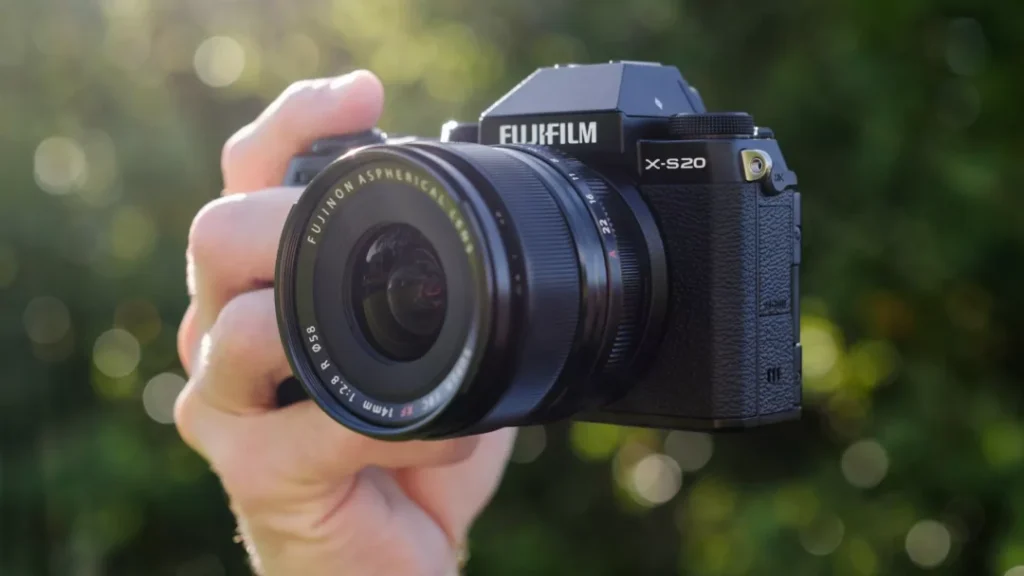
Fujifilm X-S20
Fujifilm X-S10 vs X-S20: Vlog options
The special vlog mode on the physical dial on the X-S20 is an entirely new addition. This option makes the camera’s interface more focused on the vlogger. A feature like Product Priority recognizes products on screen and quickly focuses on them, then returns to the person when the product disappears. The Background Defocus effect helps highlight the main character by adding an extra blur to the background.
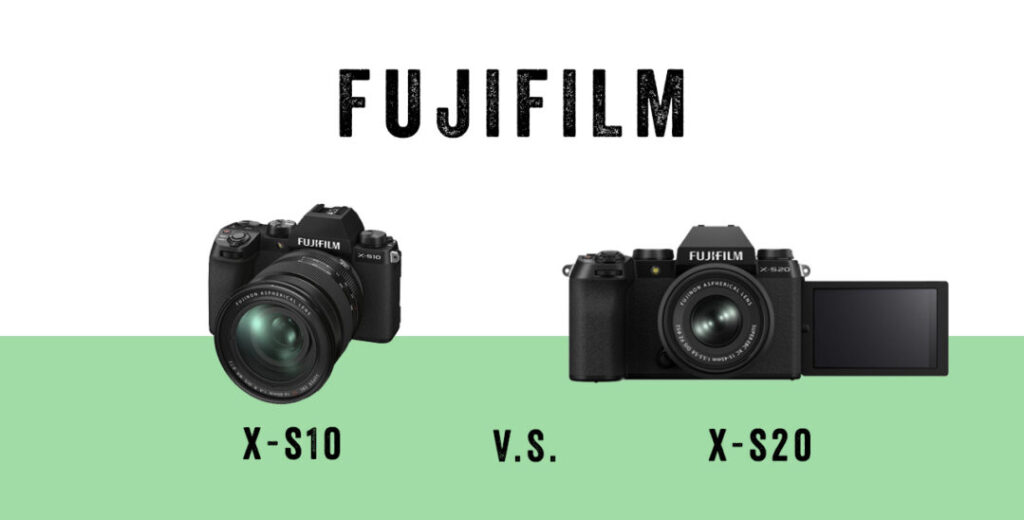
Both the X-S10 and X-S20 have a vari-angle 3-inch touchscreen. This screen can be fully tilted, so that selfies and vlogging are possible.
Fujifilm X-S10 vs X-S20: Battery
A big difference is the better and new battery of the Fujifilm X-S20. The NP W126S battery lasts up to twice as long when using 4K video or photography. The total number of photos you can now take has risen to 800. That’s a huge number because cameras from other brands often go up to 400–500 shots. The X-S20’s battery is the same as used in the Fujifilm X-T5 and Fujifilm X-H2s.
- Fujifilm X-S10: 3-inch vari-angle touchscreen
- Fujifilm X-S20: 3-inch vari-angle touchscreen
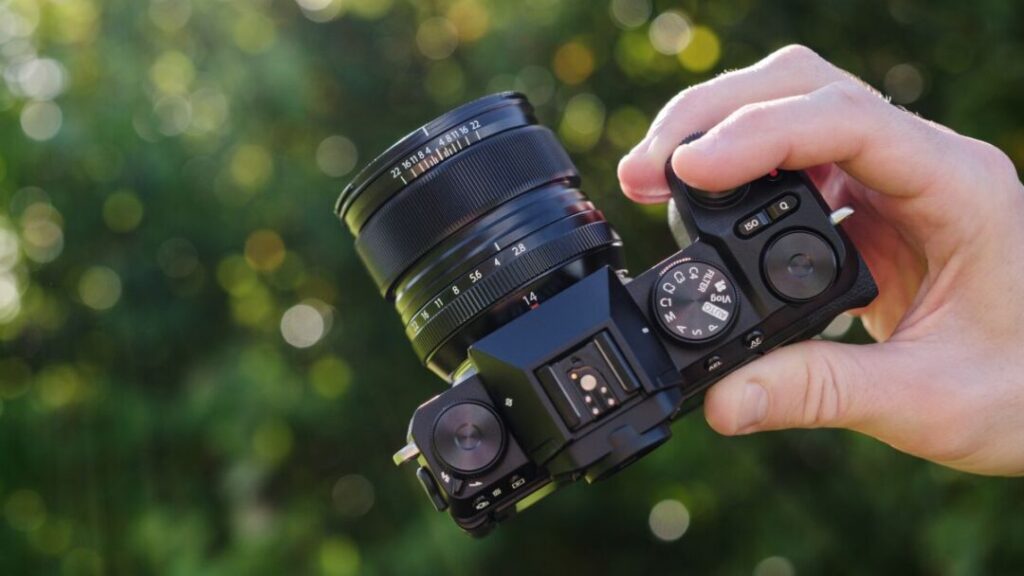
Fujifilm X-S20
Fujifilm X-S10 vs X-S20: Summery
It should be clear that the X-S20 is technically better than the almost three years older X-S10. However, not every photographer is waiting for 6.2K or 6K film. With the arrival of the X-S20, the price of the X-S10 is interesting, and it is still a very nice entry-level camera of high quality. Naturally, the X-S20 is the right choice for ambitious filmmakers looking for a future-proof camera.
Today’s prices for the Fujifilm X-S20
Click on the tabs to see the different versions.



 Amazon.com
Amazon.com





